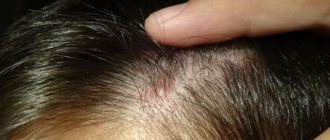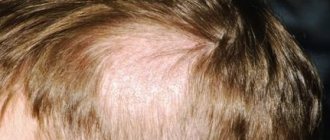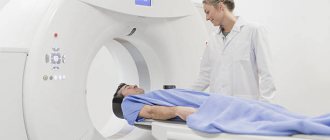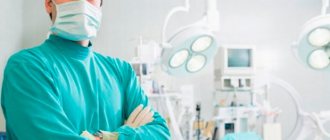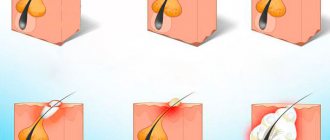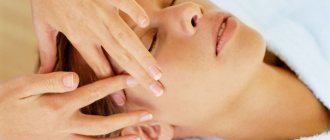What is eczema
Eczema is an inflammatory skin disease that manifests itself as a rash, itching, and redness. The rashes can take a wide variety of forms, affecting different parts of the body. The disease is not contagious. Eczema is often recurrent.
The mechanism of inflammation developing in the dermis and epidermis is that a certain group of cells, when irritated, release substances that cause inflammation. The latter in turn causes itching. The patient itches - inflammation intensifies, microbes penetrate, which together leads to systemic disorders.
Eczema is a polyetiological disease, that is, it is not possible to name a reliable root cause of this pathology. As a rule, this is a combination of exogenous and endogenous factors, the main of which are:
- weakness of the immune system;
- tendency to allergic reactions;
- nervous disorders;
- metabolic disorders in the body;
- genetic predisposition.
According to statistics, this type of dermatitis most often occurs in women aged 30–40 years. This is probably due to high emotional lability (women are more often nervous), as well as frequent contacts with potential allergens: cleaning products, detergents, cosmetics.
In what cases is medical assistance necessary?
Professional help is needed when:
- location of weeping wounds near lymph nodes;
- increased temperature, fever and chills;
- copious discharge of exudate;
- swelling with growth of the wound surface;
- the appearance of pus with an unpleasant odor;
- the appearance of black spots at the site of the lesion.
In all of the above cases, you must contact a surgeon or dermatologist to receive qualified treatment .
The main types of eczema that can occur on the scalp
There are wet and dry forms of eczema. The latter most often manifests itself on the hands and fingers, and the ingress of water onto the affected areas significantly aggravates the condition. The weeping form is accompanied by a large amount of serous discharge with the resolution of small vesicular rashes, papules, and pustules.
The following types of eczema can be localized on the scalp:
- seborrheic;
- mycotic;
- true;
- microbial;
- sycosiform.
Let's take a closer look at what each variety is and how it manifests itself.
Features of diet and nutrition during treatment and after
Diet is an important part of treatment. First of all, it is necessary to strengthen the immune system. Principles of nutrition when treating the scalp:
- Refusal of sweets and baked goods.
- Quitting alcohol.
- Smoked foods and spices should not be consumed.
- Vegetables must be present in the diet.
- You need to drink at least 2 liters of water daily.
- The menu is enriched with complex carbohydrates.
- All products must be natural.
After completion of treatment, it is advisable to continue to adhere to the dietary recommendations.
True eczema
It is developing rapidly. Small scattered bubbles appear, which soon, sometimes within several hours, open. A serous secretion is released, foci of weeping are formed, crusts, peeling, peeling of crusts, and open wounds appear. Each of the stages of eczema is rapidly replaced by the next: erythematous - papulovesicular - weeping - cortical.
In parallel, fresh vesicles and papules with serous content may appear in another area, since the process is rarely limited to one area. Characteristic is the symmetry of the rashes and the tendency of the rash from the scalp to the skin of the upper, lower extremities, and torso. There are no clearly defined lesions.
True eczema is accompanied by severe itching, which can cause neurosis and insomnia.
How to treat at different stages?
It is recommended to treat wet wounds depending on the stage of their development. The following medications and methods of their use are recommended:
- At the first, easiest stage, when the wound has just begun to ooze, it needs to be washed with hydrogen peroxide or just soap and water . Then treat the edges of the healthy skin with brilliant green or iodine to prevent overgrowth.
At this stage, you can only use ointments that are soluble in water - Levomekol and Levosin . These medications can be used to treat the wound and then apply a gauze bandage to it. - For moderate severity, when the wound begins to grow, become more wet and, in some cases, crust over, treatment is recommended saline solution, which you can buy at the pharmacy or prepare yourself (9-10 g of salt per liter of water).
This should be done every three to five hours, using after washing preparations containing silver ions - Biatene Ar (sponge with adhesive edges that absorbs exudate) or ointment Argosulfan.The hard crust, under which exudative fluid accumulates, cannot be torn off. It is softened with warm saline solution or a decoction of herbs (chamomile, string).
- The severe form is characterized by swelling, increased temperature at the site of the lesion and throughout the body, as well as the formation of purulent discharge.
In this case, oral antibiotics . In this case, the wound is treated with streptocide, penicillin or chloramphenicol powders for five to seven days. Wash the affected area with a weak solution of potassium permanganate.
Traditional treatment can be successfully combined with folk remedies :
- At a mild stage, you can apply a compress of crushed aloe or plantain , changing it every three hours until drying begins.
- For moderate severity, it is recommended to apply grated raw potatoes , as well as compresses made from calendula, birch buds, chamomile or string.
It is still better to leave a bandage of the drug with silver ions on the wound at night. - Severe forms are treated with antibiotics, but sea buckthorn oil, Kalanchoe juice and rosehip oil can significantly speed up the process of tissue regeneration and healing.
Recommendations for the treatment of roseola in children can be found on our website.
What can you use to dry it?
Zhitnyuk powder is ideal for drying , which includes:
- powdered sugar;
- streptocide;
- xeroform;
- boric acid.
xeroform , which can be purchased in the production department of the pharmacy, also dries the surface of the wound well
At the first, easiest stage, you cannot dry the wound with powders. For this purpose, it must be washed with peroxide or water and soap.
Do I need to bandage?
If the wound gets very wet, then a gauze bandage is necessary . It needs to be changed when it gets wet, but at least once every five hours.
With moderate exudate, it is better to leave the wound open.
But it will have to be hidden under a bandage or plaster when going out into public places in order to avoid infection , and also so that the child does not feel uncomfortable when strangers look at him.
Treatment of scalp eczema
Curing eczema on the scalp is quite difficult. Firstly, eczematous wounds are difficult to treat. Secondly, patients most often consult a doctor when the disease has already taken on a complex form and a secondary infection occurs. The reason for this lies in the same “insidiousness” of the disease, especially when it comes to eczema of the scalp: localized in the crown area, such lesions are difficult to detect. Simply put, the disease goes unnoticed for some time: itching is considered an accident, flaking is considered dandruff.
Mycotic infections can complicate the course. In this case, treatment will not bring results; preliminary antimycotic therapy is necessary. To do this, you need to determine the type of fungus that has settled. If the fungal component of the process was not excluded before starting treatment, then hormonal ointments and antibiotic-based ointments, which are used to combat eczema, will lead to active reproduction and mutation of fungi, if present. Therefore, in the treatment of eczema, you cannot do without consulting a dermatologist or trichologist.
As a rule, complex therapy is prescribed and may include the use of:
- hormonal ointments;
- antibiotic-based ointments;
- antihistamines;
- sedatives;
- desensitizing drugs;
- diet.
During treatment, it is also important to visit a specialist who will monitor the progress of the disease. In no case should you independently extend the prescribed course of treatment - corticosteroid hormones can cause serious side effects if used uncontrolled.
Prevention of skin diseases
Preventive measures for skin diseases are:
- Taking vitamins.
- Diet.
- Compliance with personal hygiene rules.
- Use only personal towels and combs.
- Refusal to wash your hair in hot water.
- Rarely use a hair dryer.
- Refusal to wear tight hats.
Scalp pathologies cause a person not only discomfort, but also various psychological problems, which leads to the development of complexes. Almost everything can be cured at an early stage. When you see a doctor in the later stages, the disease often becomes chronic.
- about the author
- VK profile
Tips for those suffering from eczema
If you have a genetic predisposition or have already experienced eczema, you should be extremely careful by following these recommendations:
- avoid wearing clothes made of synthetic, wool or flannel fabric;
- include in your diet more vegetable dishes, boiled meat, fermented milk products, fruits (except for those that can provoke allergies: oranges, strawberries, raspberries, tangerines);
- avoid gastronomic experiments, alcohol, too spicy, salty and fatty foods, marinades;
- take vitamin complexes, in particular vitamins A and B are important;
- avoid contact with suspected allergens in everyday life (powders, detergents, etc.);
- in case of a history of varicose veins, wear rubber stockings and bandage the legs with medicinal bandages;
- be as nervous as possible;
- Visit a dermatologist periodically.
At the MediLife clinic in St. Petersburg, highly qualified experienced dermatologists and trichologists receive treatment. You can make an appointment online. Prices for services are presented on the website. You can clarify any details by phone. Friendly staff, the ability to choose a convenient time to visit and complete anonymity are pleasant and significant additions to the qualified consultation that will be provided at MediLife.
Diagnostics - cost, time frame for obtaining results, methods of implementation
Diagnosis of head sores includes the following steps:
- Anamnesis collection.
- Visual inspection.
- Laboratory research.
Hardware diagnostics are also used. The study is carried out using special devices equipped with a camera and a microscope. The image is displayed on the monitor to the doctor.
Using computer diagnostics you can detect:
- Malfunctions of the sebaceous glands.
- Changes that have occurred in the hair follicle.
- Reduced hair density.
- Presence of illness.
By performing a phototrichogram, the disease is monitored over time . This method allows you to make an accurate diagnosis.
Using spectral analysis, microelements are studied. Thanks to this, imbalances can be identified, as well as areas of the skin affected by chemicals.
The cost of a comprehensive examination ranges from 6,000 to 10,000 rubles. It all depends on the region.
